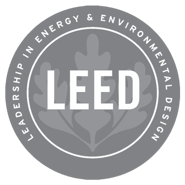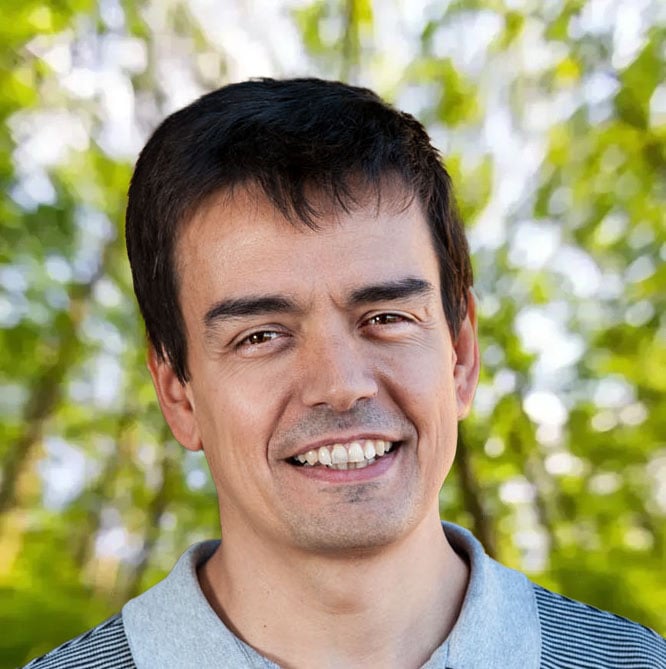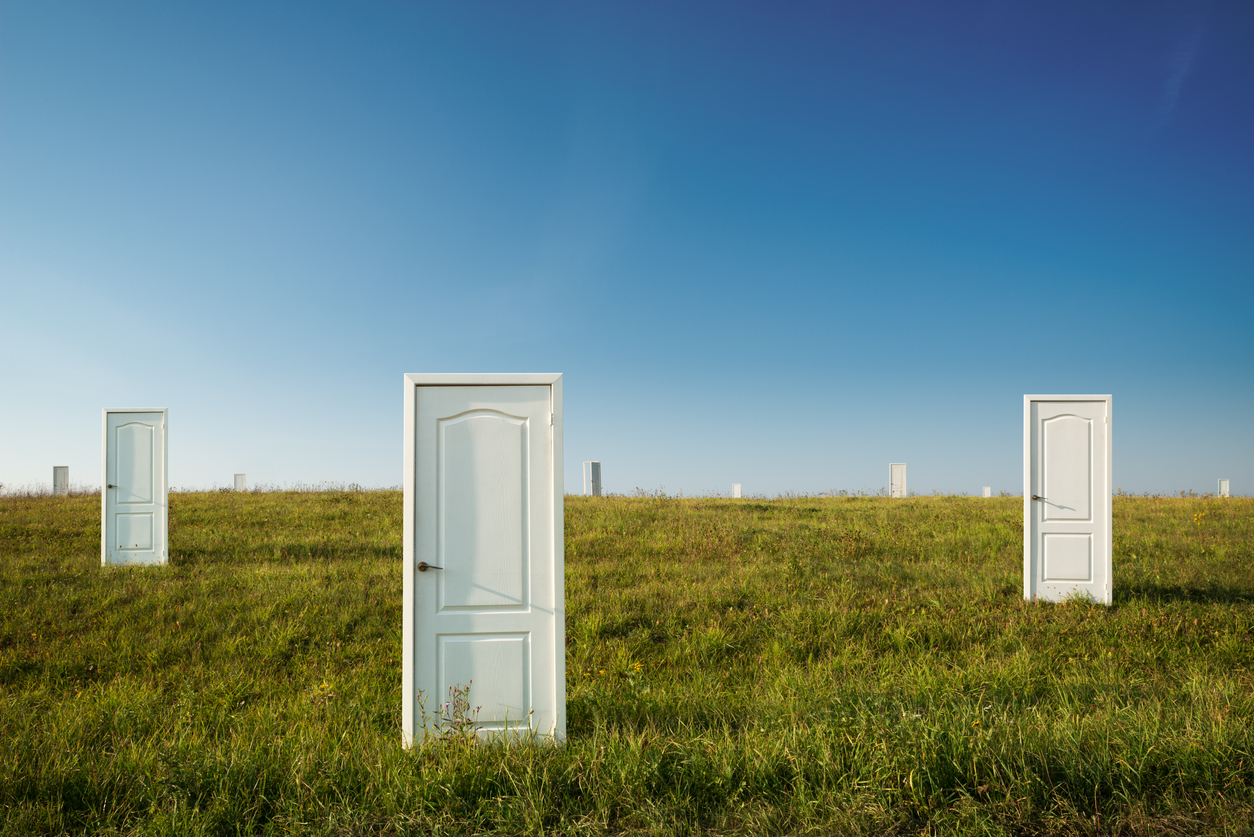The construction industry is undergoing a significant transformation and will continue to do so in the long term. To support this shift, we have evaluation and certification systems for building sustainability, which can be highly effective tools for achieving increasingly environmentally friendly design, construction, and operational standards. These systems also prioritize the surrounding environment, user comfort, and public health.
In this article, we compare four of the most internationally recognized certifications: LEED, BREEAM, VERDE, and DGNB. We explore their origins, features, benefits, and differences to help you select the one that best meets your needs.
What are sustainability certifications and why are they important?
Sustainability is a key concept in modern construction, a sector constantly evolving toward more environmentally responsible practices. Sustainable certifications are evaluation and recognition systems that verify whether a building meets established standards to minimize environmental impact, optimize resource use, and ensure the comfort and health of its users.
These systems are developed through specific methodologies that assess factors such as energy and water consumption, air quality, the materials used, the surrounding environment, and the building's life cycle. Their goal is to drive the construction of efficient, healthy, and durable buildings that respect the environment and offer economic and social benefits. Furthermore, they provide a reference framework for designers, builders, and owners, fostering responsible and sustainable practices.
Origins of each seal, entities, and their own characteristics
LEED. Leadership in Energy and Environmental Design
 Origin: United States. The origin of the LEED tool is the result of a series of works developed between 1991-1992 within a group of private companies led by David Gotffried, together with Mike Italiano and Rick Fedrizzi.
Origin: United States. The origin of the LEED tool is the result of a series of works developed between 1991-1992 within a group of private companies led by David Gotffried, together with Mike Italiano and Rick Fedrizzi.
Institution: U.S. Green Building Council(USGBC), founded in 1993 in San Francisco, began developing LEED in 1994. In Spain, they promote LEED: Spain GBC and GBCe.
Methodology: LEED is a sustainability certification and evaluation system. There are accredited professionals, although there is no certifier as such. It is a methodology based on strategies that allow obtaining credits and also includes prerequisites that must be met (in addition to other minimum requirements) in order to apply the system. These credits are classified by categories and the weight of each category is related to the concern associated with environmental impacts. It is voluntary and only certifies buildings by the Green Building Certification Institute (GBCI). The project is registered through LEED Online, which serves as a tool to manage and submit all documentation. Its expansion reaches North America, Latin America and the Caribbean, Europe, Middle East and North Africa, South Asia and Australia (153,451 buildings registered and 83,895 certified internationally by 2020; in Spain 847 buildings registered and 438 certified).
Structure: The current version of the system (v4) includes different categories: integrative process, location and transportation, sustainable site, water use efficiency, energy and atmosphere, materials and resources, indoor air quality, innovation, and regional priority. It also includes other additional categories depending on the chosen Rating System according to the building use. Up to a total of 100+10 points can be obtained, and there are four levels of certification based on the credits earned. The review can be joint or separate (design and construction). It also certifies building operations and maintenance. Includes all phases of the building life cycle.
Versions: LEED has different systems (LEED Rating System) depending on the building use: LEED Building Design and Construction and Major Renovations, LEED Core and Shell, LEED Interior Design and Construction, LEED Operations and Maintenance, LEED Neighborhood Development and LEED Homes. It has adaptations depending on the use: schools, commercial, data centres, warehouses and distribution centres, residential buildings and hospitals. It also offers different scenarios regarding the management of the certification process depending on the number of buildings to be certified and their characteristics. A prototype can also be certified (pre-certification) which simplifies the certification of similar buildings (LEED Volume), very useful for franchises, for example. It has expanded internationally, so there is flexibility to address strategies according to the country where it is applied (Global Alternative Compliance Paths).
Classification: Certificate, silver, gold, and platinum.
You can learn more about LEED in this article.
BREEAM. Building Research Establishment Environmental Assessment Methodology![]()
Origin: United Kingdom. The BREEAM tool was created in 1988 and launched in England in 1990. .png?width=183&height=175&name=1.%20BREEAM%20ES%20-%20HERRADURA%20%C3%8DNDIGO%20(Uso%20Prioritario).png)
Institution: BRE Trust. In Spain, the Fundación Instituto Tecnológico de Galicia (ITG) promotes the adaptation of this seal (language, regulations, and construction practices of Spain), and is the managing entity responsible for its operation.
Methodology: It is a system for evaluation and sustainability certification. It is necessary to contact a recognized BREEAM advisor, who will carry out all the registration, monitoring, and evaluation work to achieve the building sustainability certification. The BREAAM advisor is an independent professional with a valid licence, who has completed rigorous training and a certification process endorsed by the National Accreditation Entity (AENAC). BRE Global is the body responsible for certifying buildings. In general, it is voluntary. On the other hand, it has been used as a reference in other systems: Green Star in Canada or HK in Hong Kong. Its expansion reaches 63 countries internationally (592,865 buildings certified internationally; in Spain 306 buildings registered and 816 certified in 2020), including Spain with the BREEAM ES adaptation, and BREEAM ES advisors.
Structure: The system includes the following categories: management, health and well-being, energy, transportation, water, materials, waste, soil and ecology, pollution, and innovation. Each category includes a series of objectives that grant credits if achieved. The final grade will depend on the number of credits earned. Includes design phase, construction, and maintenance.
Versions: BREEAM offers different schemes in order to optimize the evaluation of the building: BREEAM new construction, BREEAM in use, BREEAM urban planning and BREEAM housing. The adaptations outside the UK are BREEAM International and BREEAM E in Spain.
Classification. Approved, good, very good, excellent, or exceptional.
You can find out more about BREEAM in this article.
![]() VERDE. Building Reference Efficiency Evaluation
VERDE. Building Reference Efficiency Evaluation
.png?width=178&height=187&name=Certificado%20VERDE(1).png) Origin: Spain. The VERDE certification tool was developed by the GBC Technical Committee, in collaboration with the ABIO-UPM Research Group, institutions and companies associated with GBC Spain. It is based on SBTools, a tool that certifies project documentation through accredited external evaluators. SBTools is customized in each country and given a specific name: VERDE in Spain.
Origin: Spain. The VERDE certification tool was developed by the GBC Technical Committee, in collaboration with the ABIO-UPM Research Group, institutions and companies associated with GBC Spain. It is based on SBTools, a tool that certifies project documentation through accredited external evaluators. SBTools is customized in each country and given a specific name: VERDE in Spain.
Institution: GBC Spain (GBCe) began working in 2002 under the Ministry of Development and later Housing. The GBCe association is affiliated with the international association World Building Council, and works within the framework of the iiSBE Association (International Initiative for a Sustainable Built Environment), based in Ottawa, of which it constitutes the Spanish Chapter.
Methodology: It is a system for evaluating and certifying sustainability. An accredited evaluator conducts the assessment with the VERDE tool as a preliminary step to the building's certification. The evaluation is carried out in three levels or phases: pre-design, design and construction, use and end of life of the building. It is voluntary in nature, and uses a baseline building that meets the minimum requirements by regulation and common practice. GBC Spain supervises the documentation submitted by the evaluator and resolves the decision made.
Structure: The system includes the following categories: plot and site, energy and atmosphere, natural resources, indoor climate quality, service quality, and social and economic aspects. Each category includes a series of criteria with an associated reference score ranging from 0 to 5. The final value of the evaluation is obtained as a weighting of the reduced impacts compared to the baseline building. It is a performance-based method in accordance with the philosophy of the CTE and European directives.
Versions: There are different VERDE schemes depending on the building use: VERDE New Residential and Office Building, VERDE New Equipment Building, VERDE New Single Family Building, VERDE Residential Retrofit and VERDE Equipment Retrofit. It also includes a tool to assist in sustainable building design, HADES, for the designer.
Classification: VERDE compares the reduction of the environmental impact of the building being evaluated with a baseline building, and assigns a total of 6 levels of certification from 0 to 5 VERDE leaves. Each level has an assigned impact reduction percentage.
You can learn more about VERDE in this article.
![]() DGNB. Deutsche Gesellschaft für Nachhaltiges Bauen
DGNB. Deutsche Gesellschaft für Nachhaltiges Bauen
 Origin: Germany (2007). The DGNB system was launched by the German Sustainable Building Council in collaboration with the German Federal Ministry of Transport, Building and Urban Development.
Origin: Germany (2007). The DGNB system was launched by the German Sustainable Building Council in collaboration with the German Federal Ministry of Transport, Building and Urban Development.
Institution: Sustainable Building Council in Germany.
Methodology: Evaluation and sustainability certification system, which considers environmental, economic, and socio-cultural aspects of buildings. A DGNB consultant is necessary, who is responsible for advising and collecting the evidence. Within each field, each criterion has its methodology and weighting, depending on the use of the building. The final assessment will be the total value achieved taking into account all fields. It provides a comprehensive perspective on the quality of sustainable building. The DGNB Office in Stuttgart controls the entire certification process. There is a certification committee.
Structure: The system validates different fields: ecology, economy, processes, location, and socio-cultural and functional aspects. The classification establishes three levels, granting each one a quality seal that guarantees the certification. The criteria (a total of 60) in each field are designed and weighted based on the occupancy profile, and each field is validated throughout the building life cycle. Finally, the validation depends on the goal achieved.
Versions: Standard DGNB certification for completed buildings, and DGNB pre-certification for projects in the planning or construction phase.
Classification: Gold, silver, and platinum.
Advantages and main differences
Advantages
A building that has been designed and constructed in a sustainable way, and that its operation and end of life is also sustainable, is a building that offers multiple advantages :
- It is a resource-efficient building over its entire life cycle (Life Cycle Assessment, LCA) as it consumes less water and energy, generates less waste and takes advantage of opportunities in its environment.
- It is an economically competitive building when considering its full life cycle cost (LCC): investment, resource consumption costs, maintenance costs (renovation and repair), and residual value at the end of its useful life. The market value of the building increases.
- It is a durable, comfortable, healthy, functional and accessible building to live and work in, thereby improving occupant productivity and reducing absenteeism by increasing employee satisfaction.
- It is a building that respects the environment and people's health, and in addition to being attractive, it is integrated into its cultural and heritage environment.
- It improves its image in the eyes of society, as it projects values related to environmental concern.
Main differences
The sustainability assessment and certification systems for buildings refer to environmental parameters and establish a hierarchy according to the level of sustainability achieved. The aim is to achieve the overall sustainability of the building throughout its life cycle. These are the main differences between LEED, BREEAM, GREEN and DGNB in terms of the importance they attach to different issues:
- Energy and utilization of renewable energies: All four labels prioritise the reduction of energy consumption and CO2emissionsas well as CFC-free cooling and monitoring. LEED includes as a pre-requisite the measurement of energy consumption and the commitment to share energy consumption data for 5 years, as well as the existence of the Commissioning Authority, an expert agent in the commissioning and operation of the building's facilities.
- Bioclimatism: The incorporation of passive strategies are a priority in BREEAM: building orientation, use of thermal mass and passive solar energy, natural ventilation and use of natural light. In this regard, DGNB values above all the control of heating and cooling demand, the use of passive heating and cooling, as well as natural lighting, or the use of thermal insulation. LEED proposes these strategies in the form of achievable credits, but also includes a credit (Site Assessment) that consists of a preliminary study, in very early phases of the project, to identify all site opportunities, with the aim of avoiding costs and improvised decisions in more advanced phases of the project. VERDE focuses on prioritizing the control of heating, cooling, and lighting demand as well as the use of thermal insulation.
- Eco-construction: BREEAM and DGNB prioritize strategies aimed at responsible management of resource consumption and waste generation, and at improving the indoor environmental quality of buildings. These strategies are related to the consideration of the impact on people's health due to the use of certain materials in buildings, or the application of design strategies (industrialisation, demountability, flexibility, certified wood, etc.) that reduce the amount of resources used and above all the generation of waste in the end-of-life phase. LEED proposes these strategies in the form of achievable credits, and prioritizes a minimum quality of the indoor climate, tobacco smoke control, separate storage and collection of waste, and control of waste management during the construction and demolition of the building.
- Environment: Sustainable transport associated with the buildings - public transport, bicycles, electric parking - or limiting lighting pollution are priority strategies to be assessed especially in BREEAM and GREEN. LEED proposes these strategies in the form of achievable credits. DGNB considers the associated transport, but unlike the rest, it includes the evaluation of environmental radioactivity. BREEAM also considers a priority the evaluation of the presence of radon gas or local trades. The Facility Management systems are prioritized in BREEAM, VERDE, and DGNB.
- Water: The reduction of interior and exterior water use, as well as the measurement of consumption, are priorities in LEED (prerequisites), and require the commitment to share consumption data for five years from the building's occupancy or certification, just as with energy use. It also includes an achievable credit which aims to explore all opportunities available on site for consumption reduction, non-potable water use, wastewater reduction and on-site wastewater treatment. BREEAM and VERDE also give more points to strategies for reducing water use, separating rainwater, sewage, reuse of rainwater and grey water, and treatment/reuse of sewage. DGNB focuses on the reuse of rainwater and wastewater, and the consumption reduction of water use for irrigation.
In conclusion, the choice of one sustainability certification or another depends on the specific context and objectives of the organisation, as well as the industry and sector in which it operates. If you need help in deciding which sustainability certification is the most suitable for your project, please contact us.


